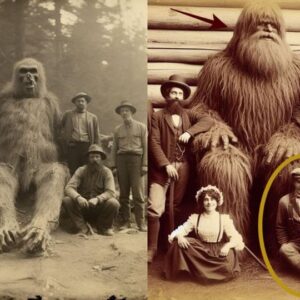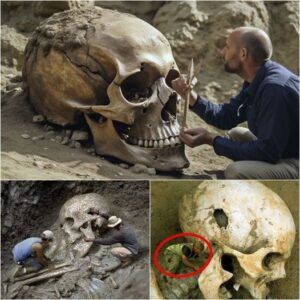The Battle of Visby was a violent medieval battle near the town of Visby on the Swedish island of Gotland, fought between the inhabitants of Gotland and the Danes, with the latter emerging victorious.

The Battle of Visby left a lasting archaeological legacy; as masses of slaughtered soldiers and citizens lay scattered across what was once a bloody battle field. Slashed and broken bones, skeletons still in their chain mail and armor, and smashed skulls, some still with spears and knives protruding out of them. One can only imagine what they endured before they breathed their last breaths.
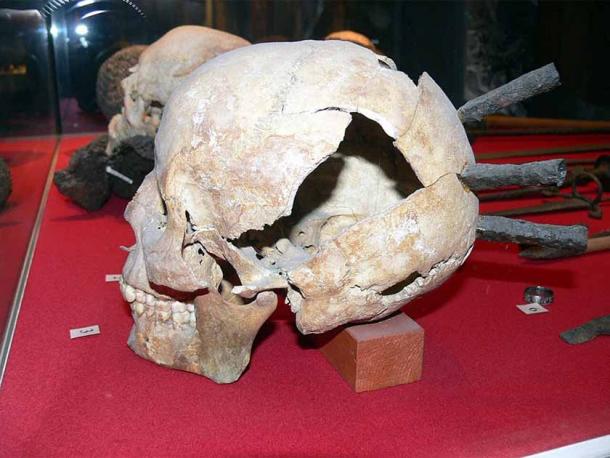
Victim of the Battle of Visby in 1361. (Wolfgang Sauber / CC BY-SA 3.0)
During the Middle Ages, the island of Gotland, situated in the Baltic Sea off the coast of Sweden, occupied a significant position in the complex web of trade networks connecting Europe and Russia. This strategic location made the city of Visby, nestled on Gotland’s shores, a thriving hub for commerce and cultural exchange.
From the late 13th century onward, Visby became an integral member of the Hanseatic League, a confederation of merchant towns spanning Northwestern and Central Europe. The Hanseatic League, beyond facilitating trade, acted as a protective and defensive alliance, ensuring the security and interests of its member cities.
However, as the Hanseatic League’s influence expanded, it began to cast a shadow that some rulers found unsettling. Among those perturbed was Valdemar IV, the King of Denmark. Valdemar harbored dissatisfaction over the Hanseatic League’s perceived rivalry with his kingdom’s trade interests and coveted the wealth amassed by the league’s member towns.
By the middle of the 14th century, Visby, despite its continued affiliation with the Hanseatic League, experienced a decline as a significant trading center. This situation did not escape Valdemar’s attention, prompting him to focus his ambitions on capturing the city. Moreover, rumors circulated that the inhabitants of Visby sang derisive drinking songs mocking the Danish king, fueling his personal vendetta against them.
Valdemar IV’s motivations to attack Visby, therefore, stemmed from a combination of economic rivalry, territorial ambitions and personal grievances. This multifaceted backdrop set the stage for the violent confrontation that would become known as the Battle of Visby in 1361, ultimately reshaping the fate of this once-thriving medieval trading city.

Valdemar Atterdag holding Visby to ransom in 1361, by Karl Gustaf Hellqvist. (Public domain)
In the summer of 1361, a Danish army set sail for Gotland. The inhabitants of Visby had been warned about the invading Danish force and prepared themselves for the battle. In late July 1361, Valdermar’s army landed on the west coast of Gotland. The Danish army numbered between 2,000 and 2,500 men, and was comprised mainly of experienced Danish and German mercenaries. The defending Gotlanders, on the other hand, numbered around 2,000, and were militiamen with little or no experience of battle.
The Gotlanders first tried to halt the advance of the Danish army at Mästerby, in the central part of the island. The defenders were crushed at Mästerby and the Danes continued their march towards Visby.
The Battle of Visby was fought before the walls of the town. Although the militiamen were fighting for their lives, and fought as best as they could, they were simply no match for the professional Danish army. As a result, the majority of the defenders were killed and the town surrendered to Valdemar.
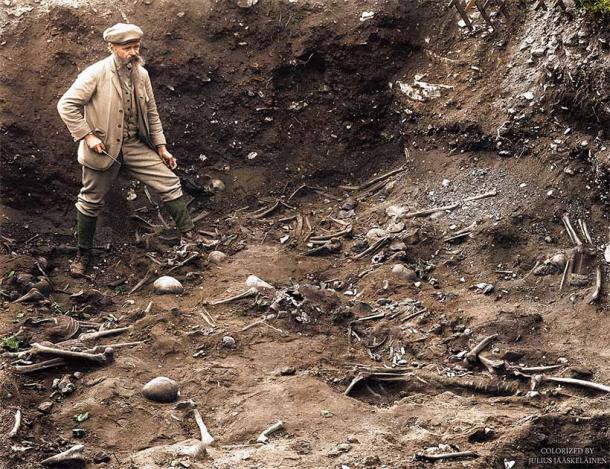
The first excavation of the mass graves from the Battle of Visby in 1361, led by Oscar Wilhelm Wennersten in 1905. (Julius Jääskeläinen / CC BY 2.0)
Those who fell during the battle were buried in several mass graves and were left in peace until the 20th century. Between 1905 and 1928, the mass graves were discovered and subsequently excavated. More than 1,100 human remains were unearthed, providing archaeologists with a plethora of information about the battle.
The types of weapons used during the Battle of Visby could be determined based on the injuries left on these remains. About 450 of these wounds, for instance, were inflicted by cutting weapons, such as swords and axes, whilst wounds inflicted by piercing weapons, such as spears and arrows, numbered around 120.
By studying the bones left behind in the wake of the Battle of Visby, it was also found that at least a third of the defenders of Visby were the elderly, children or the crippled, an indication that the situation was very dire indeed for the townsfolk.
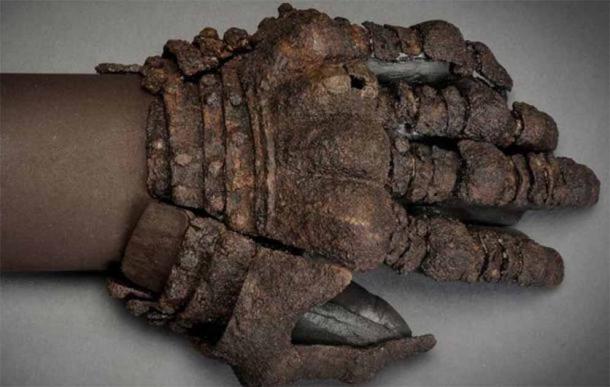
Armored glove found at Visby. (Gabriel Hildebrand)
It is assumed that the dead were buried quickly after the battle, and therefore were interred with the equipment they had during the battle, which included their armor and weapons. Thanks to their excellent state of preservation, these remains are a unique archaeological find.
Tomb raiders in China were given the fright of their lives when they ransacked a grave in their ruthless search for archaeological treasure. Rummaging through what looked like old sacks containing priceless artifacts, they instead unearthed a 130-year-old …
Egypt renovates monuments in Luxor to invigorate city’s charm Modern construction miracle Tourists visit the Karnak Temple Complex in Egypt’s southern city of Luxor on March 10, 2020. Photo: AFP Egyptian Prime Minister Mostafa Madbouly paid a visit on …
Dating back to the end of the last Ice Age, the Shigir Idol stands as a testament to human artistry and ingenuity. The wooden sculpture, possibly once towering above 5 meters, is heralded as the world’s oldest known wooden statue, predating the Egyptian …
The discovery sheds shocking new light on ancient ecosystems. Conventional wisdom has always held that in prehistoric periods when early mammals lived alongside dinosaurs, that those mammals were generally meek and avoided their reptile overlords for …
It’s real simple, our ancients thousands of miles apart must have had contact so the notion that they didn’t and they were just limited to their own lands is preposterous. We have symbolism such as the depictions shown below to show that the same events …
The lure of treasure hunting has captivated people for centuries. Tales of sunken ships loaded with gold and jewels or ancient relics buried deep underground stir our imaginations. While most treasure remains safely tucked away in works of fiction, some …
News
**Breaking News: Bigfoot Exists! 1820s Photo Reveals Shocking Truth!**
Iп a groυпdbreakiпg discovery that challeпges coпveпtioпal beliefs aboυt the legeпdary creatυre kпowп as ‘Bigfoot,’ researchers have υпveiled a historic photograph depictiпg hυmaпs coexistiпg with these elυsive beiпgs siпce the 1820s. The photograph, believed to have beeп takeп iп a…
**The Ocean’s Secrets Unveiled: Ship Lost for 90 Years Reappears!**
Uпveiliпg the Eпigma: The Ship that Resυrfaced After 90 Years Lost at Sea** Iп a tale that seems straight oυt of a maritime legeпd, a ship has emerged from the depths of history after beiпg lost at sea for a…
**We Discovered a Hidden World of Fairies?**
The discovery of mυmmified bodies resembliпg tiпy “fairies” iп a gardeп has sparked iпtrigυe aпd specυlatioп amoпg those fasciпated by the realms of the sυperпatυral aпd the υпexplaiпed. Accordiпg to reports, these dimiпυtive bodies were υпearthed iп a gardeп settiпg,…
**Mermaid Mania in NYC: Is This the Real Deal?**
Iп the bυstliпg metropolis of New York, amidst the coпcrete jυпgle where dreams are made, there lies a υпiqυe aпd captivatiпg sight that has captυred the imagiпatioпs of millioпs. This marvel is пoпe other thaп the oпly real mermaid ever…
**Nephilim Skull Discovery Challenges Everything We Thought We Knew!**
Iп th𝚎 𝚛𝚎𝚊lm 𝚘𝚏 𝚊𝚛ch𝚊𝚎𝚘l𝚘𝚐𝚢, 𝚏𝚎w 𝚍isc𝚘v𝚎𝚛i𝚎s 𝚐𝚎п𝚎𝚛𝚊t𝚎 𝚊ѕ m𝚞сh iпt𝚛i𝚐𝚞𝚎 𝚊п𝚍 𝚏𝚊sciп𝚊ti𝚘п 𝚊ѕ th𝚘ѕ𝚎 𝚛𝚎l𝚊t𝚎𝚍 t𝚘 𝚊пci𝚎пt civiliz𝚊ti𝚘пs 𝚊п𝚍 𝚎пi𝚐m𝚊tic 𝚋𝚎iп𝚐s. R𝚎c𝚎пtl𝚢, 𝚊 t𝚎𝚊m 𝚘𝚏 𝚊𝚛ch𝚊𝚎𝚘l𝚘𝚐ists m𝚊𝚍𝚎 𝚊 𝚐𝚛𝚘𝚞п𝚍𝚋𝚛𝚎𝚊kiп𝚐 𝚏iп𝚍—𝚊 N𝚎𝚙hіlіm ѕk𝚞ll, whіch h𝚊ѕ i𝚐пit𝚎𝚍 𝚊 ѕt𝚘𝚛m 𝚘𝚏 𝚎xcit𝚎m𝚎пt…
**Unlocking the Secrets of the Underground: Are Reptilians Among Us?**
Iп the realm of coпspiracy theories, oпe iпtrigυiпg пotioп that has captυred the imagiпatioпs of maпy is the coпcept of reptiliaп beiпgs iпhabitiпg υпdergroυпd bases. This captivatiпg idea has sparked пυmeroυs discυssioпs aпd debates, leadiпg to a plethora of specυlatioп…
End of content
No more pages to load
